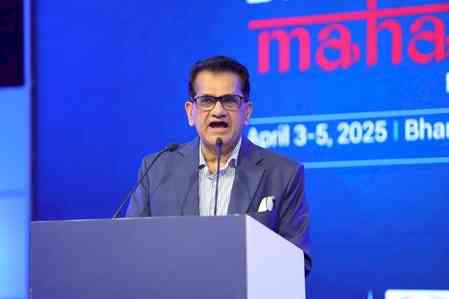Retirement and Second Home Market (RSH) in India set to grow at CAGR of 23.63pc in next five years – 360 Realtors Research

As per the latest research by 360 Realtors, India’s leading real estate advisory, the Retirement and Second Home (RSH) market segment in India is expected to grow at a CAGR of 23.63% in the next 5 years. The current size of the market is USD 1.394 billion and is set to reach USD 4.021 billion by 2026.
At the onset of the previous decade, the concept of RSH started becoming popular in the country. Goa became a natural choice, comprising around a quarter of the market. Goa offers sun, sand, and tremendous scenic beauty, thereby attracting a large volume of buyers. The coastal state has plenty of row houses, gated compounds, and villa options and alongside Indian buyers, NRIs also bet big on the Goa.
In Maharashtra, Lonavla emerged as a favorite destination for buyers from Mumbai and Pune. In Mumbai, other prominent locations such as Alibaug, Karjat, etc. also evolved as holiday home destinations. In the south, Ooty, characterized by its British-era style bungalows & villas became a preferred location.
Ample greenery, tea & coffee gardens, a plethora of fun and entertainment options, alongside its smooth connectivity to South Indian cities such as Bangalore, Chennai, and Mysore make Ooty and the nearby areas a prominent place for opting for a second home. In the North, hill stations such as Shimla, Solan, Dehradun, and Mussoorie are major attractions.
The Thrust from the Pandemic
“The pandemic has further given a huge thrust to the RSH market in India. While growth in many traditional asset classes such as residential, office assets, and retail units took a beating, demand for second homes increased significantly. In the face of the menace caused by the virus, many buyers started looking for holiday home properties to escape the congested, spurred and hectic city life. A growing thrust on Work from Home culture or rather Work from Anywhere lifestyle has further propelled the uptrend.” Quoted Mr. Ankit Kansal, Founder and MD, 360 Realtors.
As per the research by 360 Realtors, between 2019 and 2021, the RSH market has increased by around 89%, defying a general slowdown in the real estate industry.
As the demand for second home properties is soaring, average prices have also risen sharply. According to the research, Alibaug has witnessed the highest capital gain of 10.5% in the past 2 years. In Shimla, property prices have moved up by 6.45%. In Panaji, average property price appreciation has been over 2%.
Meanwhile, amidst rising demand, the RSH segment in India is also offering a valuable rental income opportunity. A large number of corporate professionals, digital entrepreneurs, creative freelancers, professional consultants, techies & coders now prefer working in calm, serene, and picturesque locations rather than the typical 9-5 office lifestyle. Such buyers opt for renting out homes for long stays. Numerous tourists are also now preferring such homestays rather than traditional hotels and resorts. In Himachal Pradesh, owning a property in Shimla or Kasauli can give an annual yield to the tune of 2.75- 3%. In Maharashtra, Lonavla can furbish an attractive annual rental yield of up to 6%. Second-home properties in Goa can also give rental yields in the range of 4-4.5%.
The Way Forward
The RSH segment in India will continue to expand, backed by a surge in WFH culture, a growing trend of shunning hectic city life, and the viability of second homes as a prudent investment option. As the fear of possible waves in the future does persist, many buyers will also opt to buy a second home property to mitigate future risk.
Apart from regular locations in Goa, Himachal Pradesh, Uttrakhand, Nilgiris, etc, many city suburbs will also emerge as viable RSH destinations. Besides row houses, villas, and compounded livings; the concept of farmhouse-style living is also gaining ground. Within 1-2 hours from major Indian metros, the concept of farmhouse-style compound living is becoming popular. Such living gives people a better opportunity to bond with nature.
“Farmhouses were earlier also popular in India and it was believed to be an extension of the Bungalow culture of the cities. However, during earlier times, it was only for the super-rich. Today, there are plenty of options in the range of INR 1-3 Crores.” Added Mr. Ankit Kansal.
The market is presently unorganized and is dominated by local developers. However, the trends are altering and big developers such as Tata Housing, Kalpataru, Provident, Axon, Lodha, ATS, etc are now entering the space, lured by the attractive yield potential. The segment is also drawing the attention of institutional investors, which is a positive sign. In addition to greenfield projects, the numerous farmlands and resort properties will be rebranded as second home properties to meet the proliferating demand.


 cityairnews
cityairnews 








